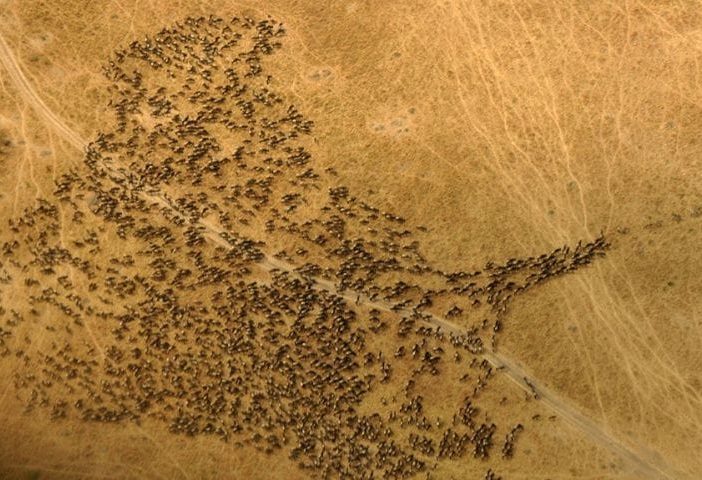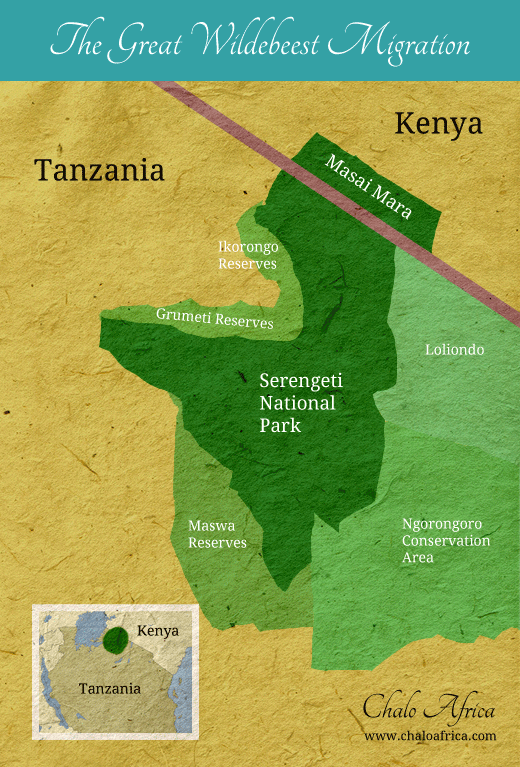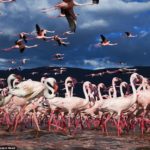
The simultaneous movement of an immense number of wildebeests, accompanied by a very large number of zebras, and smaller numbers of Grant’s gazelle, Thompson’s gazelle, eland and impala is called the Great Migration of the Serengeti and Masai Mara.
Every year, these animals move in a fairly predictable pattern. They migrate in search for fresh grazing and water. The migration timing is dependent on the rainfall pattern every year. During this search, the migratory animals follow a cyclical pattern, spending most of their time in the Serengeti and a shorter period of time (usually from July – early October) in the famous Masai Mara, Kenya, when about half of the migrating herds cross into Kenya, while the other half remains in the Northern Serengeti.
July – August: This migration continues northwards, often spreading out.
September: The herd spread out across the northern Serengeti, where the Mara River poses a huge obstacle to the migrating herd. Watching the frantic herds cross the Mara River can be quite spectacular. There are scenes of great confusion and panic. It is very common to see the same herd cross the river north on one day, and then back south a few days later. During this crossing, the Nile crocodiles feast on the animals they can get hold off. Not for the faint hearted.
October: The herds start migrating south again.
View our interactive animated map below to understand the location of the great migration across Kenya & Tanzania through out the year.

Planning on visiting during the migration? Here are some itineraries we highly recommend:
- Kenya – A Luxury Migration Safari
- Kenya – Big Cats of the Mara Conservancies
- Tanzania – The Iconic Migration & Best of Tanzania
- Tanzania – Secret Serengeti
- Tanzania – Royal Serengeti in the Grumeti Reserves

Leave a Reply